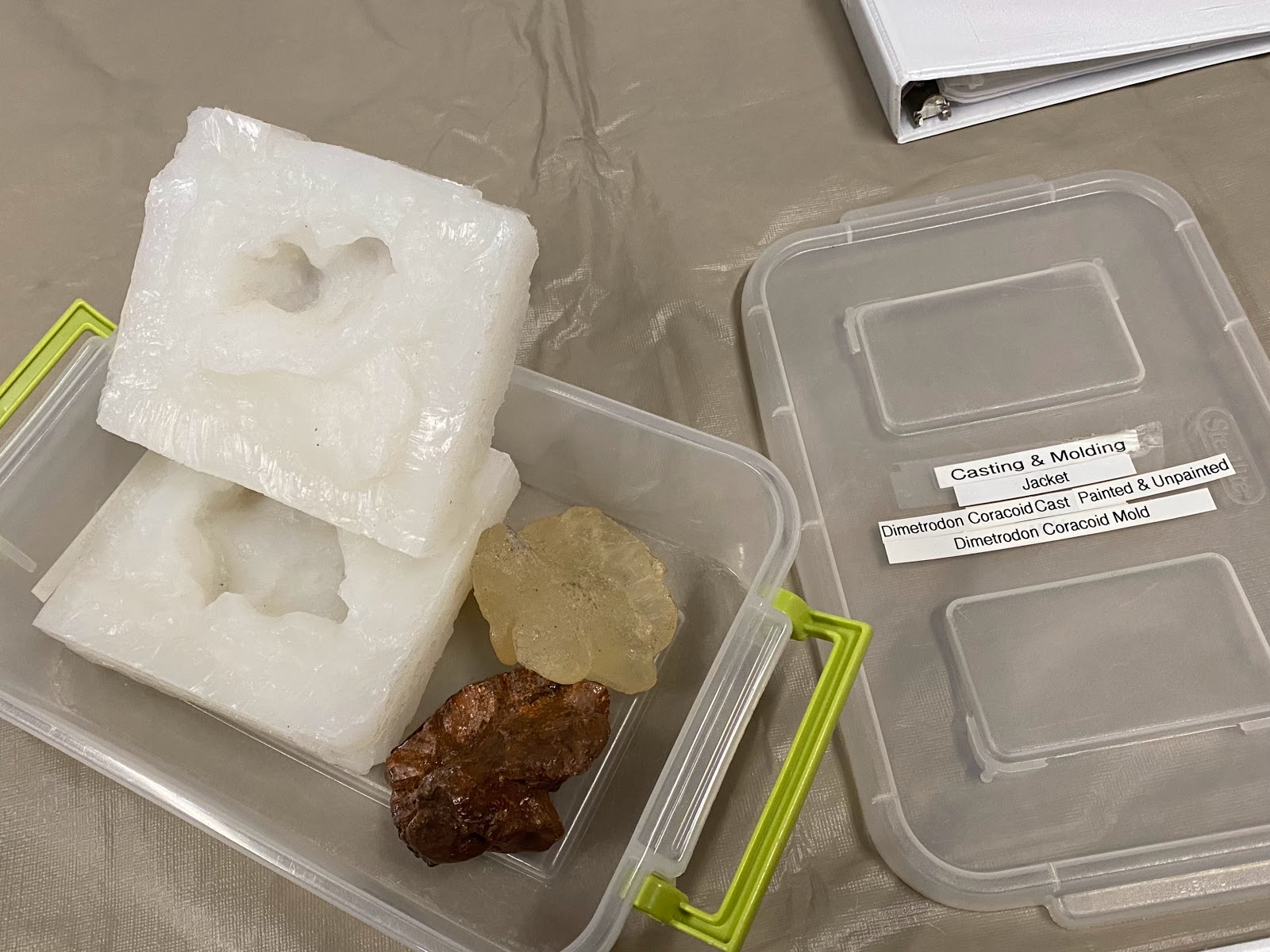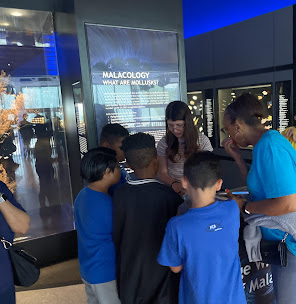Day 6: The Permian Cart
Returning from the weekend, today was pretty calm in comparison to some of last week's days. I did not feel ready to present with the cart I had briefly seen at the end of Friday, so I decided to focus on getting more familiar with that today.
I signed out the Permian touch cart in the paleo exhibit and took it to the same spare room that I spent the majority of last week.
This past weekend I revised the research papers Ms. Leap gave me for this specific cart and although it was pretty clear and detailed, I still wanted to see if I could apply what I had learned to the actual casts and models this cart offered. So, I set to looking through the objects it contained, and had a more practical approach to the research.
Below are two of my favourite pieces that I worked with today:
 |
| Dimetrodon Coracoid Cast & Mold |
The first box contained a model of a mold and cast. So, obviously these are not fossils and rather replicas. A docent might use these during a presentation to demonstrate how near exact copies are made of original fossil pieces. For this process, a resin is used and poured over the original fossil to fill the empty impression of the fossil and creates a cast. The end result is usually contains most of the details and texture of the original, and can be painted to match it even more. In the picture you can see two casts, one is painted and the other is not; they are both replicas.
 |
| Trace fossil imprints |
They are hard to see (and trust me it's hard to see even in person) but the rock on the right has small Permian arthropod tracks. Arthropods include modern day insects and crustaceans. Because this is not a fossilised part of an animal, this is referred to as a "trace fossil," which means the fossil of a trace of an animal (footprint, trail etc.), rather than the animal itself. These tracks lead to believe this insect walked across the bottom of a muddy pond.
On the left, this is a rock that was formed on a Permian period riverbed. They might not be too obvious, but there are layers in the rock, from this, people can determine if animals and plants lived around the same time depending if they are found on the same "level." Another thing that can be derived from the layers is the relative climate occurring for fossils found in each layer of rock formation. For example, if there was fast moving water, that would allow only for bigger particles or specimen to sink into the riverbed; this is called "high energy." On the other hand, if there is "low energy" that means that water was flowing at a much slower rate, which in turn allows for soil and finer (smaller) particles to deposit.
There were more specimens I was interested in, such as the diplocaulus. This Permian amphibian has a boomerang-shaped head, and has received the nickname "boomerang-head" fittingly. I didn't take a picture of this fossil, but try to search it... it's a curious sight.
After I had finished with the cart, I had an hour or so left, so I went to put the cart back in the paleo exhibit. I decided to then stay there to further dive into the general area of the hall the cart stays in. Once I had finished that I used up the remainder of my time having fun exploring the rest of that exhibit.
For tomorrow, I hope to stay a while to present this cart, and if so will be preparing myself for a really busy hall. Once the crowd will have dwindled in numbers, I will go back to the malacology cart to get a scan of all of the specimens that are there on display; this will be for my final product: a detailed overview of the touch cart of that hall, which can be used to aid future volunteers or staff when preparing to present.
I can't wait to see what tomorrow has in store!



Comments
Post a Comment